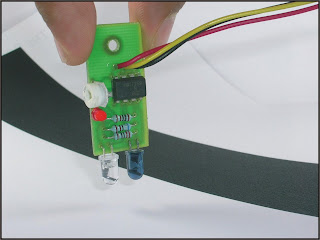Burner For 8051 Famliy HardWare + Software ...
Hi Friends,
For 8051 family Burner i.e. programmer with the help of which we can burn or Program our micro controller . For this we need as well hard ware and software. IF you want you make it own hardware but it is bit complictaed for making PCB. because so many small cross tracks which gonnashort during PCB making. If u want to buy then u buy from his original site here :-
Buy Here
IF u Want to make its own then go for this :-
Features
- Supports major Atmel 89 series devices
- Auto Identify connected hardware and devices
- Error checking and verification in-built
- Lock of programs in chip supported to prevent program copying
- 20 and 40 pin ZIF socket on-board
- Auto Erase before writing and Auto Verify after writing
- Informative status bar and access to latest programmed file
- Simple and Easy to use
Specifications
Dimensions: 76mm x 180mm (3" x 7")
Power Supply: 14-18V DC or 12-16V AC
Interface: RS-232, 9-pin D connector
Data Speed: 57600 bps, 8 bits, no parity, 1 stop, no flow control
File format: Intel 8-bit HEX
Program Sockets: 40 pin DIP - 0.6" & 20 pin DIP 0.3" ZIF socket
Software: Works on Windows 95, 98, Me, 2000, NT, XP
Introduction
Simple to use & low cost, yet powerful flash microcontroller programmer for the Atmel 89 series. It will Program, Read and Verify Code Data, Write Lock Bits, Erase and Blank Check. All fuse and lock bits are programmable. This programmer has intelligent onboard firmware and connects to the serial port. It can be used with any type of computer and requires no special hardware. All that is needed is a serial communication port which all computers have.All devices have signature bytes that the programmer reads to automatically identify the chip. No need to select the device type, just plug it in and go! All devices also have a number of lock bits to provide various levels of software and programming protection. These lock bits are fully programmable using this programmer. Lock bits are useful to protect the progam to be read back from microcontroller only allowing erase to reprogram the microcontroller.
The programmer connects to a host computer using a standard RS232 serial port. All the programming 'intelligence' is built into the programmer so you do not need any special hardware to run it. Programmer comes with window based software for easy programming of the devices.

Supported Devices
The table below shows the key differences between the various microcontrollers. Data sheets for each device can be found on the Atmel web site. All these devices are supported by the programmer.
| Flash (Kbytes) | EEPROM | RAM (Bytes) | I/O Pins | |
| AT89C55WD | 20 | 256 | 32 | |
| AT89C51 | 4 | 128 | 32 | |
| AT89LV51 | 4 | 128 | 32 | |
| AT89C52 | 8 | 256 | 32 | |
| AT89LV52 | 8 | 256 | 32 | |
| AT89C55 | 20 | 256 | 32 | |
| AT89LV55 | 20 | 256 | 32 | |
| AT89S51 | 4 | 128 | 32 | |
| AT89LS51 | 4 | 128 | 32 | |
| AT89S52 | 8 | 256 | 32 | |
| AT89LS52 | 8 | 256 | 32 | |
| AT89S53 | 12 | 256 | 32 | |
| AT89LS53 | 12 | 256 | 32 | |
| AT89S8252 | 8 | 2 Kb | 256 | 32 |
| AT89LS8252 | 8 | 2 Kb | 256 | 32 |
| AT89C1051 | 1 | 128 | 15 | |
| AT89C2051 | 2 | 128 | 15 | |
| AT89C4051 | 4 | 128 | 15 |
These microcontrollers from Atmel use flash memory to store programs. Flash memory can be electronically erased and programmed, no need for a UV eraser.
Programming Software
Computer side software called 'ProLoad' is executed that accepts the Intel HEX format file generated from compiler to be sent to target microcontroller. It auto detects the hardware connected to the serial port. It also auto detects the chip inserted and bytes used.

Connects to your computer's serial port (Comm 1, 2, 3 or 4) with a standard DB9 Male to DB9 Female cable. (Cable Included). Baud Rate - 57600,COMx Automatically selected by window software. No PC Card Required. Uses Intel Hex Data Format (Default output of most assemblers and compilers.)
Download Complete Package Here :-
1. Software Proload V5.4
2. Schematic
3. DIY PACK
Regards,
Manan Saini ...







































